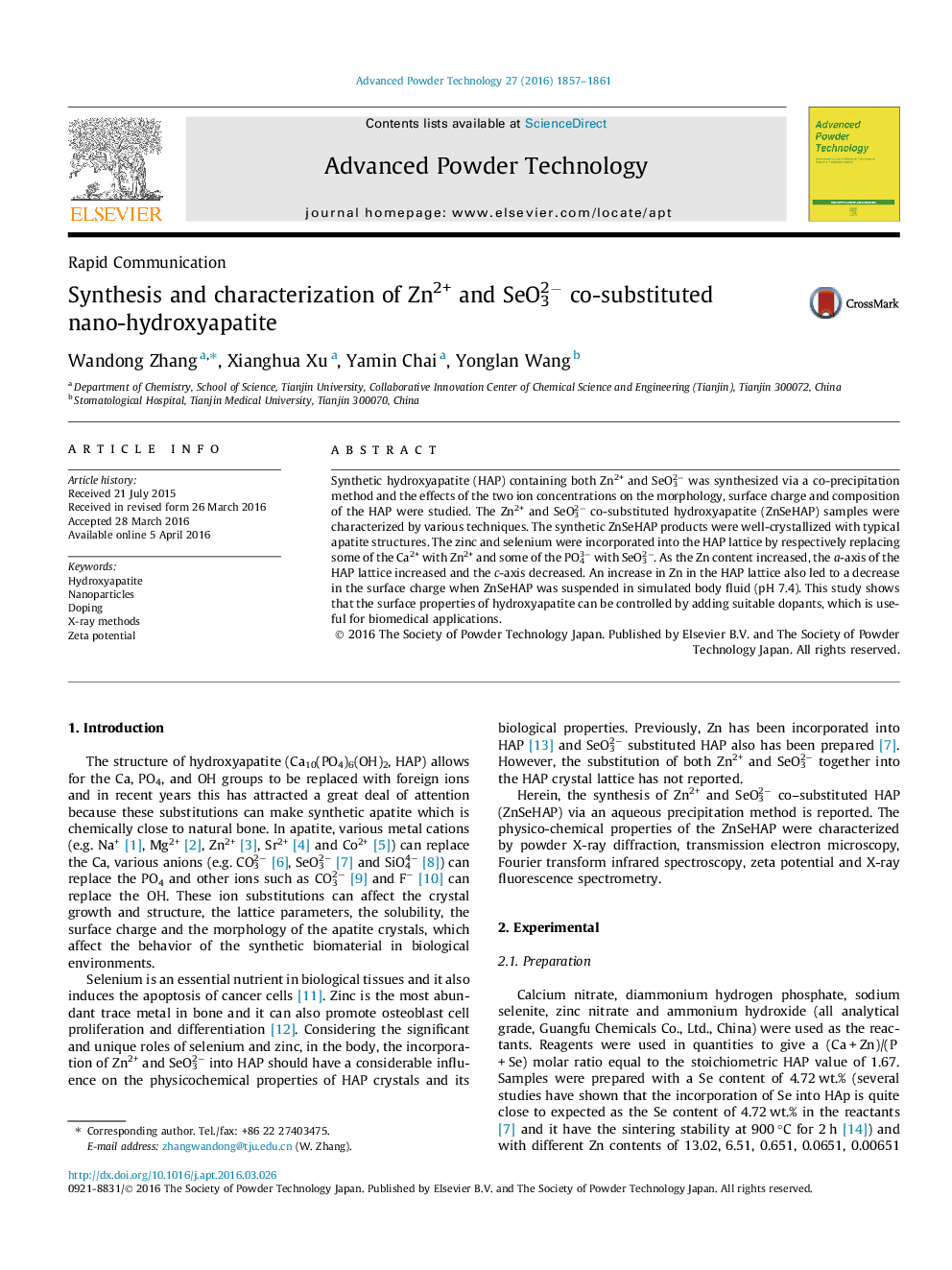| Article ID | Journal | Published Year | Pages | File Type |
|---|---|---|---|---|
| 143982 | Advanced Powder Technology | 2016 | 5 Pages |
•An increase in the a-axis and a decrease in c-axis with increasing Zn content.•An increase of zinc in the HAP lattice leads to a decrease in the surface charge.•The synthetic ZnSeHAP particles show a rod-like morphology.•The size of the particles decreased with increase in concentration of Zn.
Synthetic hydroxyapatite (HAP) containing both Zn2+ and SeO32− was synthesized via a co-precipitation method and the effects of the two ion concentrations on the morphology, surface charge and composition of the HAP were studied. The Zn2+ and SeO32− co-substituted hydroxyapatite (ZnSeHAP) samples were characterized by various techniques. The synthetic ZnSeHAP products were well-crystallized with typical apatite structures. The zinc and selenium were incorporated into the HAP lattice by respectively replacing some of the Ca2+ with Zn2+ and some of the PO43− with SeO32−. As the Zn content increased, the a-axis of the HAP lattice increased and the c-axis decreased. An increase in Zn in the HAP lattice also led to a decrease in the surface charge when ZnSeHAP was suspended in simulated body fluid (pH 7.4). This study shows that the surface properties of hydroxyapatite can be controlled by adding suitable dopants, which is useful for biomedical applications.
Graphical abstractFigure optionsDownload full-size imageDownload as PowerPoint slide
